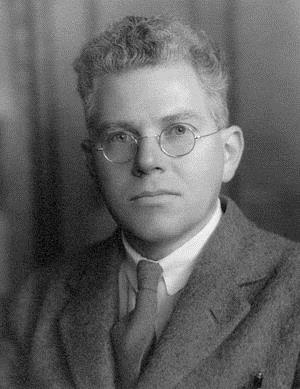Sir Marcus "Mark" Laurence Elwin Oliphant, AC KBE FRS FAA (8 October 1901 – 14 July 2000) was an Australian physicist and humanitarian who played an important role in the first experimental demonstration of nuclear fusion and also the development of nuclear weapons.Born in Adelaide, South Australia, Oliphant graduated from the University of Adelaide in 1922. He was awarded an 1851 Exhibition Scholarship in 1927 on the strength of the research he had done on mercury, and went to England, where he studied under Sir Ernest Rutherford at the University of Cambridge's Cavendish Laboratory. There, he used a particle accelerator to fire heavy hydrogen nuclei (deuterons) at various targets. He discovered the nuclei of helium 3 (helions) and tritium (tritons). He also discovered that when they reacted with each other, the particles that were released had far more energy than they started with. Energy had been liberated from inside the nucleus, and he realised that this was a result of nuclear fusion.Oliphant left the Cavendish Laboratory in 1937 to become the Poynting Professor of Physics at the University of Birmingham. He attempted to build a 60-inch (150 cm) cyclotron at the university, but its completion was postponed by the outbreak of the Second World War in Europe in 1939. He became involved with the development of radar, heading a group at the University of Birmingham that included John Randall and Harry Boot, who created a radical new design, the cavity magnetron, that made microwave radar possible. He also formed part of the MAUD Committee, which reported that an atomic bomb was not only feasible, but might be produced as early as 1943. Oliphant was instrumental in spreading the word of this finding in the United States, thereby starting what became the Manhattan Project. Later in the war, he worked on it with his friend Ernest Lawrence at the Radiation Laboratory in Berkeley, California, on Electromagnetic isotope separation.After the war, Oliphant returned to Australia as the first Director of the Research School of Physical Sciences and Engineering at the new Australian National University, where he initiated the design and construction of the world's largest (500 megajoule) homopolar generator. He retired in 1976, but was appointed Governor of South Australia on the advice of Premier Don Dunstan. He assisted in the founding of the Australian Democrats political party, and he was the chairman of the meeting in Melbourne in 1977 at which the party was launched. Late in life he watched his wife, Rosa, suffer before her death in 1987, and he became an advocate for voluntary euthanasia. He died in Canberra in 2000.

Alias
Oliphant, Marcus Laurence Erwin (füll name)
Fecha de nacimiento
1901-10-08
Año de nacimiento
1901
Fecha de defunción
2000-07-14
Año de defunción
2000



Aipatu
0